Titanic: The Exhibition
In which I realize that I should stop being snobby about museums and expensive road races.
A place to explore: Titanic: The Exhibition

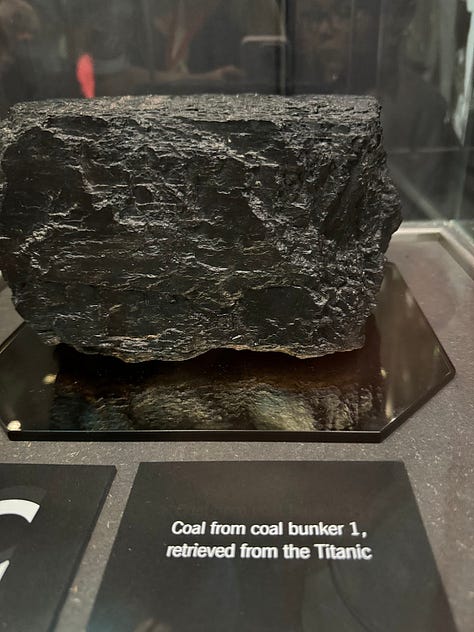
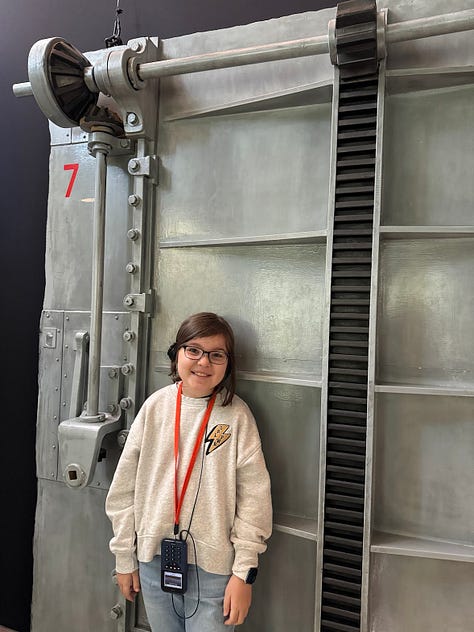
My feelings about the Titanic Experience are similar to my feelings about the 5K/10K/15K Hot Chocolate Race Series.
When I started running, back in the stone ages of the late 1990s, 5Ks were local affairs. You’d pay $10 or $20 bucks and most of that money went to a charity. You’d get a scratchy T-shirt with a bunch of ads on the back, but that was it. No stupid swag or medal. Finisher medals used to be only for marathons.
Not anymore. Now, for-profit companies put on races full of gimmicks and ginormous tacky medals and mugs full of hot cocoa mix. The $84 race fee does not to go charity. You can get “lounge access” if you sign up for a VIP club.
Ugh.
That’s how Titanic: The Exhibition (“an original experience by Musealia”) felt to me. It was pretending to be a museum, but wasn’t a museum, because museums are staffed by knowledgeable (and usually local) people who know stuff. Musealia, a company trying to turn a profit, hired random folks to staff the experience.
Titanic: The Exhibition was set up in a warehouse in downtown Seattle. It featured multiple panels onto which historical documents (mostly photographs and letters) were projected. There were a handful of cases of actual artifacts (tea sets from other Red Star ships, postcards, recovered wood chips from the ship, a hunk of coal, etc.) and some larger replica situations, pictured above. An hour-long audio guide took visitors through the experience.
The cheesiest bit was the “iceberg.”
Musealia “turns universal stories into traveling exhibitions,” which I technically think is a great idea. As a public school history teacher, I am usually all for any tricks to squeeze any amount of historical knowledge into teenagers. I am usually not nearly as snobby about history as I am about local 5K races. For example, I am all for Hamilton, despite the historical inaccuracies.1
Even though the Titanic Exhibition was cheesy, and I was looking at projected images I could have pulled up online, I still liked it. My ten-year-old daughter (who had NOT seen the Kate and Leo movie, but had read about the Titanic) LOVED it. She was fascinated by the stories and the artifacts. She loved touching the sheet of ice that the exhibition called an iceberg. She went home and immediately pulled more Titanic books from online library shelves. And a one book from our home library.
So I probably shouldn’t be such a snob about Musealia and the Titanic Exhibition. There are many worse things a company could be doing than projecting primary sources onto panel walls and providing audio (which was pretty engaging actually) and replicated props to tell stories.
While I’m at it, maybe I should go run the Seattle Hot Chocolate 15K this Spring. After all, I’m always trying to convince people to run. If a tacky medal and a mug of hot cocoa leads to a life of running, then that is an $84 very well spent.
A book to read: LUCK OF THE TITANIC by Stacey Lee
One of the books my kiddo has been reading since our return from the Titanic Exhibition is Stacey Lee’s Luck of the Titanic. I’d tried to get my kid to read it before with no luck (ha), but now she’s into it. The book is a YA (young adult) novel but doesn’t have any sexy times so younger kids can read it too.
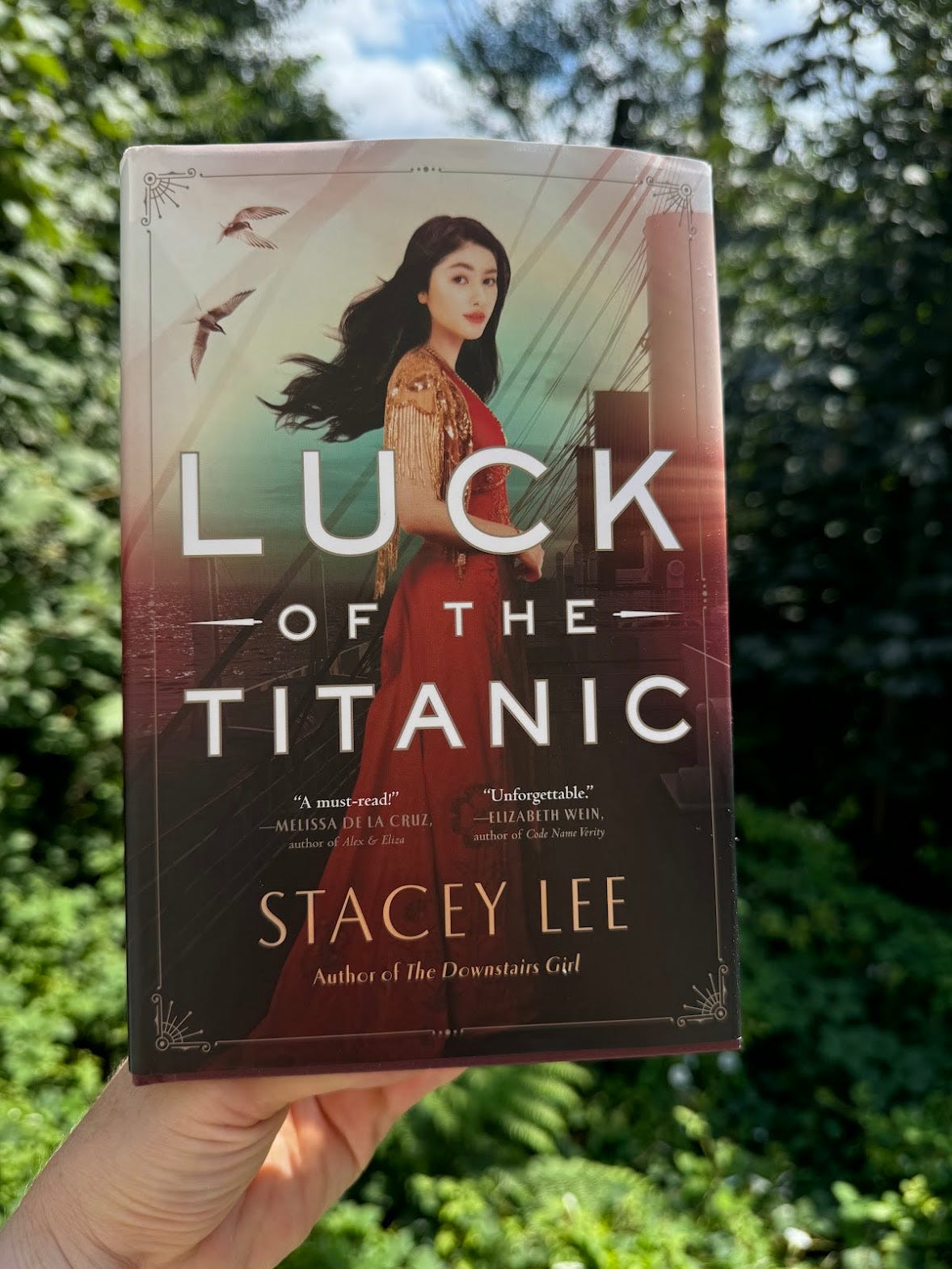
The story is about Val, who sneaks onto the Titanic (she is half Chinese and not allowed aboard - more on that situation below). Her twin brother is on the ship as a member of the coal shoveling crew.
Val’s plan is to convince her brother to reignite their circus routine and catch the eye of a wealthy circus owner aboard, thus securing a livelihood for them in New York. As Val convinces her reluctant brother, sneaks between her secret first class berth and her brother’s crew cabins, meets a fabulous cast of characters, and grieves for her dead parents, the reader almost forgets that the ship is going to sink by the end of the novel.
Highly recommend :)
Stacey Lee’s DOWNSTAIRS GIRL is also excellent and I’m very excited that her next novel is going to be set in the Pacific Northwest. I’ll be buying and reviewing it the second it comes out.
A lesson to teach: The Chinese Exclusion Act
As a World History (not a US History) teacher, I don’t spend a ton of time teaching the Chinese Exclusion Act, although maybe it would be interesting to compare China’s Closed Door policy (designed to block the advances of imperial Europe) with the US Chinese Exclusion Act (designed to be racist). Here’s a primer on Imperialism and China’s Closed Door policy from my favorite author/YouTube personality/historian/tuberculosis-fighter, John Green.
The Chinese Exclusion Act does come up with I teach American Government though. When teaching students about the legislative branch, I loosely follow this lesson on the National Archives website.
The lesson describes the 20 different “jobs” of Congress and provides 20 different primary source documents. Each document is an example of Congress fulfilling one such job, and students are expected to match each document to the job. For example, there is a letter Abraham Lincoln wrote to the Senate asking them to confirm his latest nominee (Ulysses S. Grant to be Lieutenant General). This obvious matches with the congressional job to confirm presidential nominations.
Before teaching, I remove the document about Congress granting citizenship status to WWI veterans and sub in this document about the Chinese Exclusion Act. That gives me an excuse to talk to students about the Act as I hop table-to-table and help them make sense of the documents.
Before handing the stack of 20 primary sources to students, I take them through this hefty lecture. This Google Slides Presentation teaches students about the 20 jobs of Congress. Each slide has a video clip of a member of Congress doing one of those jobs. Most of the clips are from the past few years, so students get a healthy dose of current events in these lessons. When we get to immigration/naturalization, I show Dick Durban’s 202 speech advocating for the Dream Act, and then we have a discussion about how racism often shows up immigration laws.
If you want to teach this, here is the student worksheet I created. Students complete the middle column as they watch the modern video examples (that usually takes about 2 or 3 50-minute class periods). The righthand column they complete as they sort through the stack of primary source documents. I print out 5 sets of the documents (one for each table group) so they can all share and work together.
Happy reading, teaching, and exploring! See y’all next week!
Although I did really love Annette Laing’s take on Hamilton. Here is a taste: “Historians are watching forty years of poorly-paid hard work spent buried in dusty documents being wiped out by a Broadway musical that purports to bring equality to history, and does nothing of the kind.” Her Substack, Non-Boring History, is excellent.



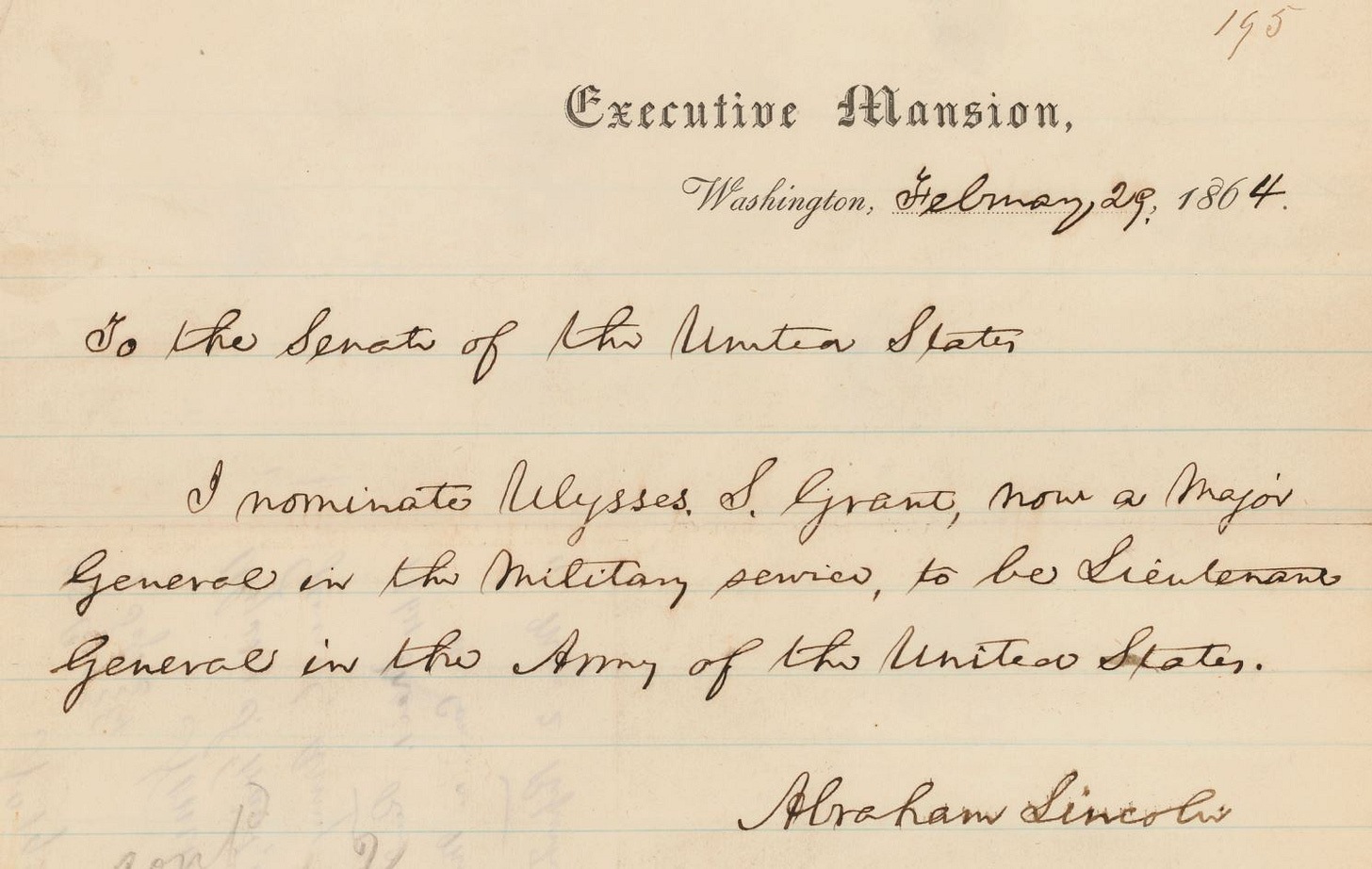
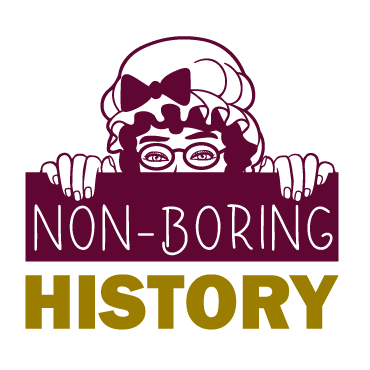
Eeee! I, too, love the Titanic. I did grow up with the whole Leo and Kate movie, but never saw the whole movie all the way through in one sitting until I was 18. And my first thought was - wait, this is good??? I also saw Titanique The Musical when I went to New York recently and it was pure camp - the movie as told through the point of view of Celine Dion. Highly recommend if you're already in New York and looking for more things to do.
If your daughter is looking for more Titanic books, I really loved the Dear America series as a kid and there's a Titanic one!
https://shop.scholastic.com/teachers-ecommerce/teacher/books/dear-america-voyage-on-the-great-titanic-9780439603768.html
I've been wondering what/where that Titanic exhibit was about! Maybe I'll take my kids. Also, yes the corporate 5k stuff is ANNOYING